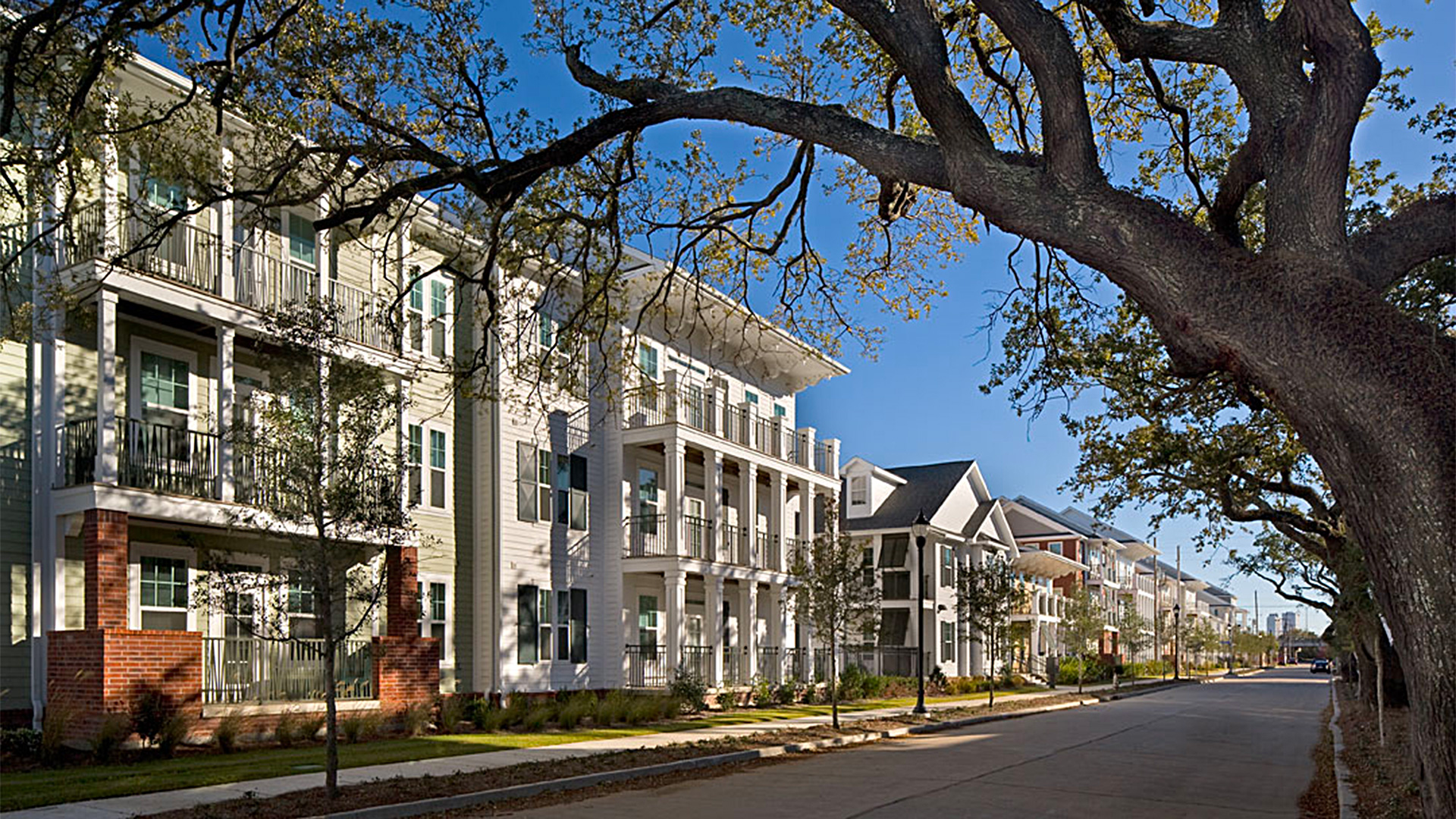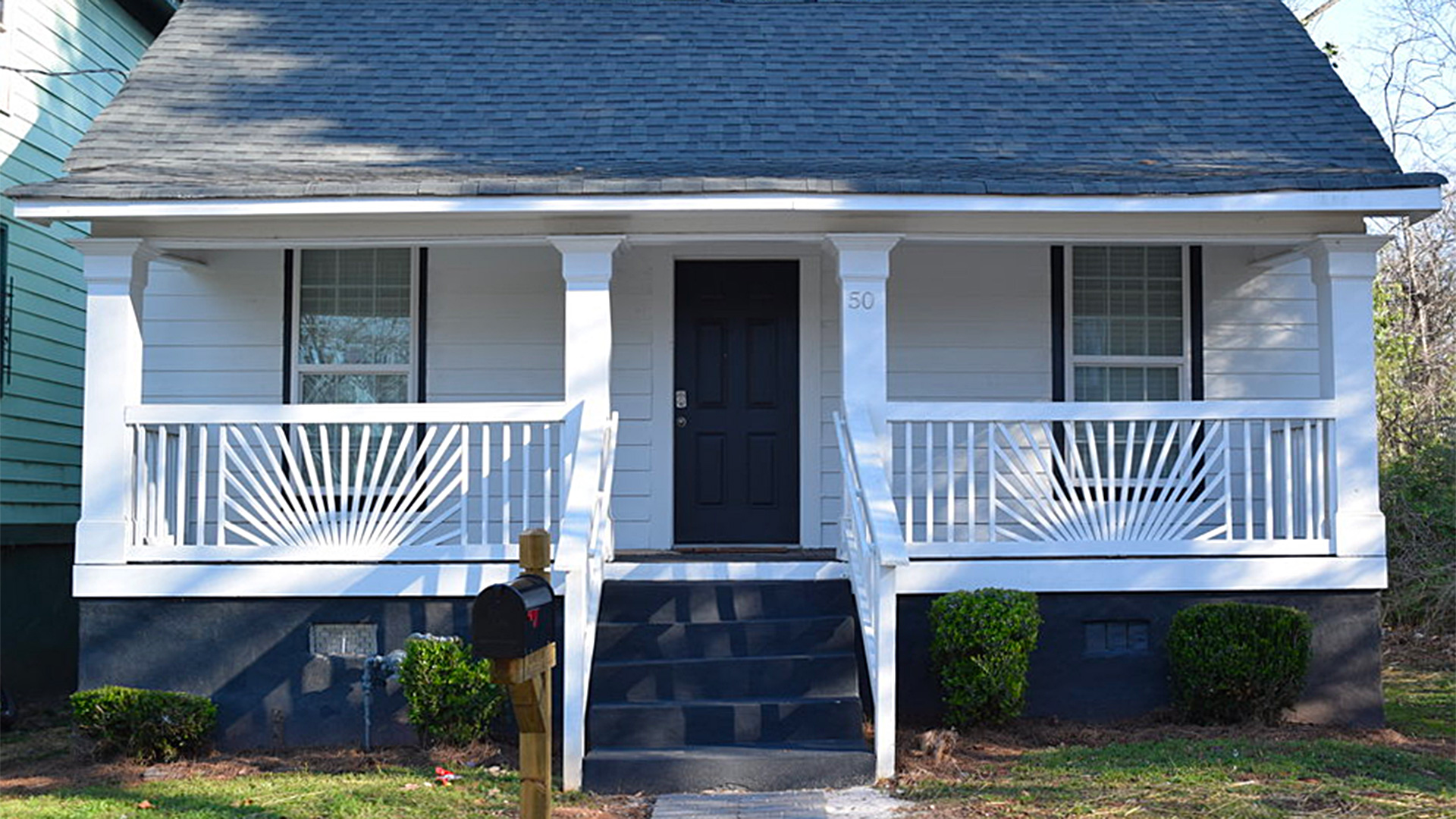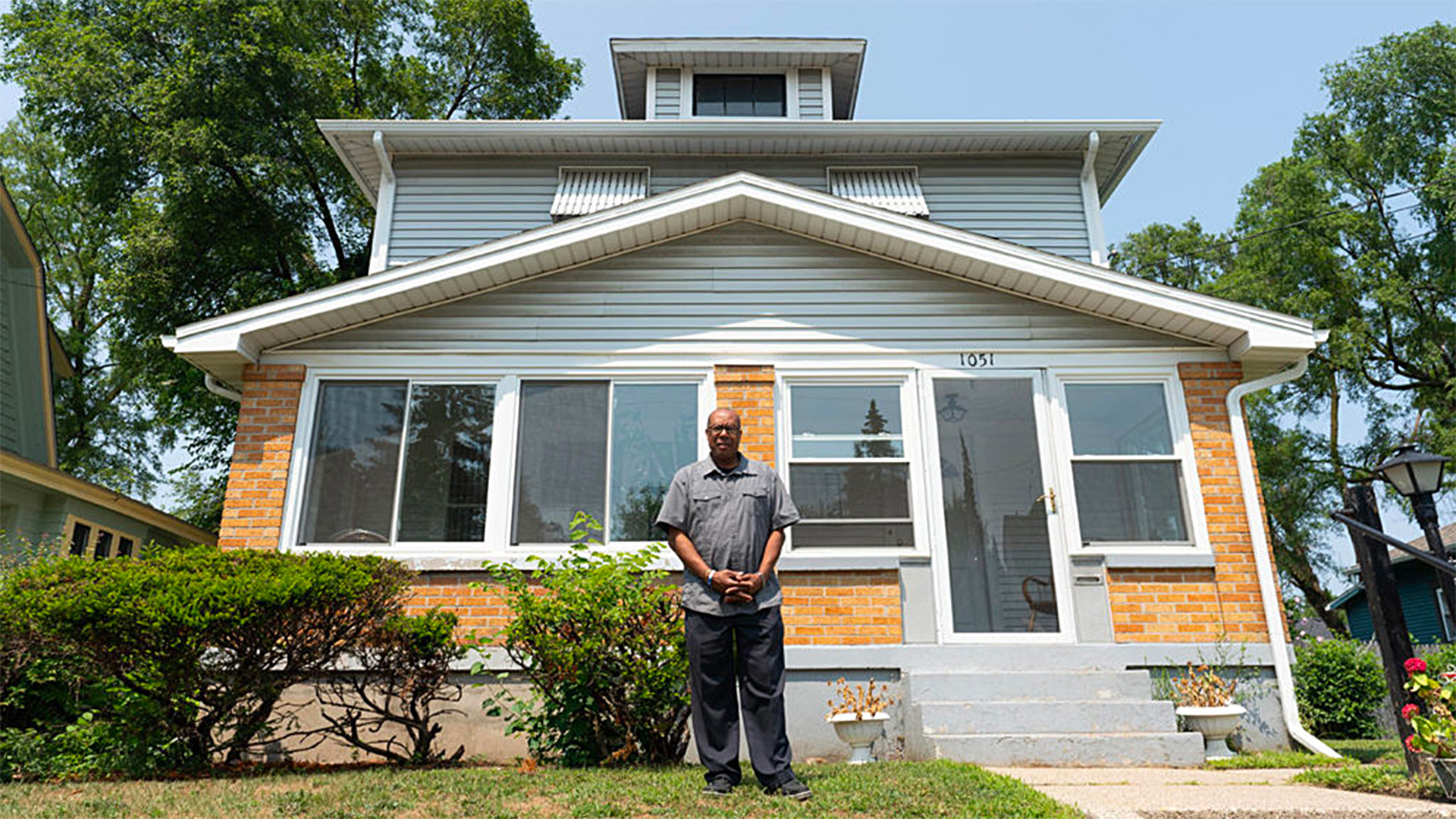Lessons Learned
Ensure The Availability Of Diverse, Affordable Options
Provide Quality Homes
Deliberately Support Economic Mobility
Developing resources to enable upward mobility requires planning, coordination and creativity.
Moving the Field Series • A Place Everyone Can Call Home
Developing resources to enable upward mobility requires planning, coordination and creativity.
There is privilege in that platitude. We can realize a future when everyone lives in housing that helps them thrive. But to get there, we must reconcile the ugly legacy of segregationist policies, practices and social norms that have intentionally excluded access to stable housing and home ownership for too many people.
It’s not a difficult equation. People who are able to own their homes build wealth over time. Children who live in safe, stable homes have a greater chance of educational success. Vibrant neighborhoods have less crime, healthier residents and opportunities for everyone to express themselves and pursue opportunity.
At Purpose Built Communities, we believe everyone deserves a safe, supportive and stable place to call home. Our national network of neighborhood partners has shown that the availability of high-quality mixed-income housing for all stages of life with deep channels of permanent affordability is core to making a neighborhood a place where people want to stay and move into. A place worthy of hope, pride and love.
High-quality, mixed-income housing is a key element of our model to advance long-term neighborhood revitalization.Watch this video for an overview of the Purpose Built approach.Watch Video
At Purpose Built Communities, we believe everyone deserves a safe, supportive and stable place to call home.
Distressed neighborhoods have very high transiency rates, 2-3 times than that of healthy neighborhoods, which means that the entire neighborhood is “self-displacing” every three or four years on average. Half of low-income transiency is due to people “fleeing” these last-resort neighborhoods.
Mixed-income housing usually takes the form of multi-family rental units such as apartments and townhomes. Offering units that are indistinguishable from one another – not identifiable by income tier – is essential. And attention to the life cycle of people is also key. When people can find rental units while they establish financial stability, starter homes for purchase to build wealth, and options for seniors to downsize or access supportive care, lives can be lived fully in a place. Entrepreneurship can be fostered. Children can get to know people of different ages and backgrounds, broadening their horizons. Neighbors feel safe walking and recreating in their community, improving individual health.

Of the almost 700 households in the Columbia Parc mixed-income community, nearly 500 receive public housing or reduced rental rates. An apartment complex for seniors and small cottages provide housing to meet the needs of residents aged 62 or older. This approach is helping this historic community recover from decades of disinvestment and the devastation of Hurricane Katrina.
Read MoreThe built environment profoundly impacts the physical and mental health of residents – and has been shown to add to the burden of illness among Black and Brown populations living in neighborhoods with high rates of poverty.
When housing is intentionally designed with amenities and spaces that encourage interaction, neighborhoods attract more demographic and socio-economic diversity. Over time, neighbors get to know each other as people. They build networks of support. And their collective trust for each other leads to safer and more vibrant communities.
Based on our experience, we believe quality housing is:

“We make it a point to nurture beauty in the neighborhood, regardless of the price points or ultimate aim of the homes. This tactic benefits each individual homeowner, and it also furthers the overall ends of community development.”
Read more about how developing housing that is attractive and crafted with quality in mind helps obscure income division to promote equity.
Read MoreHome ownership is one of the most common ways people build wealth. However, home ownership rates among Black families are in steep decline, worsening the wealth gap. Thus, a key part of eradicating intergenerational poverty hinges on ensuring that neighborhoods have appreciating property values given that research shows residential equity is the largest component of household wealth.
A coordinated plan across local housing authorities, funding agencies, nonprofit partners and developers to collaboratively manage affordability is key to creating an economically diverse neighborhood that supports wealth-building. If neighborhood housing options are integrated across income levels then everyone has access to the market power they deserve.
An effective approach to housing includes support for and options to help people become homeowners, such as clinics to help people understand financing options and local programs developed to help with down payments.

Residents developed the Neighborhood Strong program, which provides funding for home repairs. The program helps keep legacy residents in their homes, which increases home values and in turn supports stability for families and the entire neighborhood. It also ensures residents live in safe, healthy homes that help them build value and wealth.
Read MoreSupport for the Moving the Field Series was provided by a grant from the Robert Wood Johnson Foundation.















